Lesson 9
Grams and Kilograms, Liters and Milliliters
Warm-up: Which One Doesn’t Belong: Meter, Meter on the Page (10 minutes)
Narrative
This warm-up prompts students to carefully analyze and compare 4 length measurements and how they are expressed. To make comparisons, students apply what they know about the relationship between meters and centimeters and the convention for writing the units.
Launch
- Groups of 2
- Display the image.
- “Pick one that doesn’t belong. Be ready to share why it doesn’t belong.”
- 1 minute: quiet think time
Activity
- “Discuss your thinking with your partner.”
- 2–3 minutes: partner discussion
- Share and record responses.
Student Facing
Which one doesn’t belong?
- 2 m
- 2,000 meters
- 200 centimeters
-

Student Response
For access, consult one of our IM Certified Partners.
Activity Synthesis
- “How do these measurements compare to one another? How do you know?” (Three of them are equivalent: 2 m, 200 centimeters, and the diagram showing 2 segments of 1 meter, all represent 2 meters. One of them, B, is 1,000 times as long as all the others. It is 2 kilometers.)
Activity 1: A Whole Lot of Paper Clips (15 minutes)
Narrative
The purpose of this activity is to build students’ intuition for 1 gram, 1 kilogram, and the relationship between them. Students learn that 1 kilogram is 1,000 times as heavy as 1 gram. Students convert quantities from kilograms to grams and compare quantities given in different units.
As in earlier lessons, when an amount given in kilograms is a fraction (\(\frac{1}{2}\) or \(\frac{1}{10}\)), students are not expected to find its equivalent in grams by multiplying the fraction by 1,000. Instead they are to reason about the conversion based on what they know about fractions and the number 1,000.
If possible, prepare one or more boxes of 100 or 250 paper clips and allow students to feel and compare the weight of 1 paper clip, 100 paper clips, 500 paper clips, and so on.
Advances: Conversing, Reading
Supports accessibility for: Conceptual Processing, Attention
Required Materials
Materials to Gather
Required Preparation
- Gather one or more boxes of 100 metal paper clips, if available.
Launch
- Groups of 2
- Survey the class on their familiarity with the units grams and kilograms.
- “For those who are familiar with it, where might you have heard, seen, or used these units?”
- If possible, give students access to paper clips for reference.
- Explain that while pounds and ounces are more commonly used in the U.S. for measuring weight, in other countries, grams and kilograms are standard.
Activity
- 6–7 minutes: independent work time
- 2–3 minutes: partner discussion
- Monitor for the ways students:
- describe the relationship between kilograms and grams.
- reason about fractional amounts in kilograms and express them in grams.
- compare quantities given in different units.
Student Facing
One paper clip weighs 1 gram.
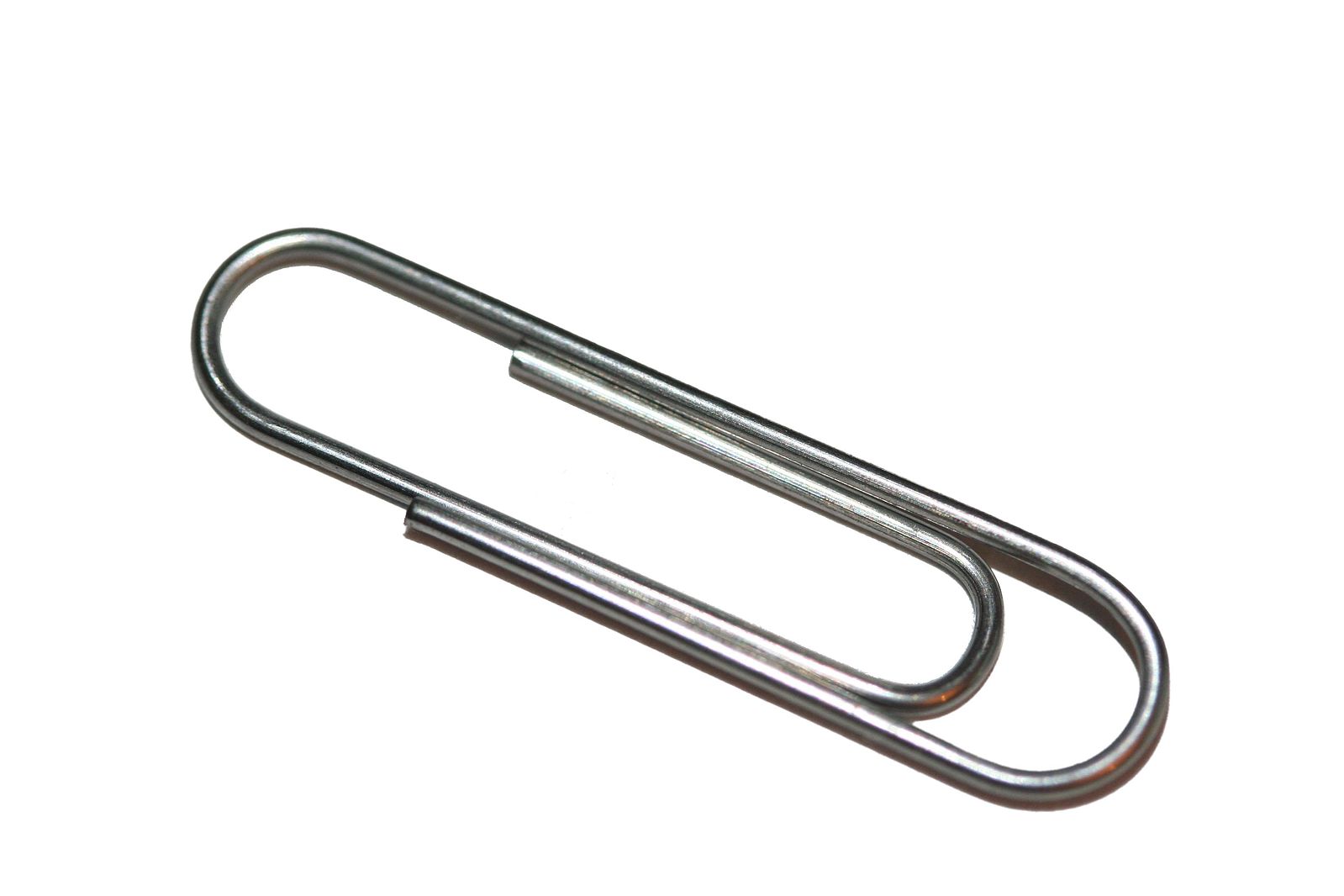
-
How many grams are the paper clips in each image?
a. 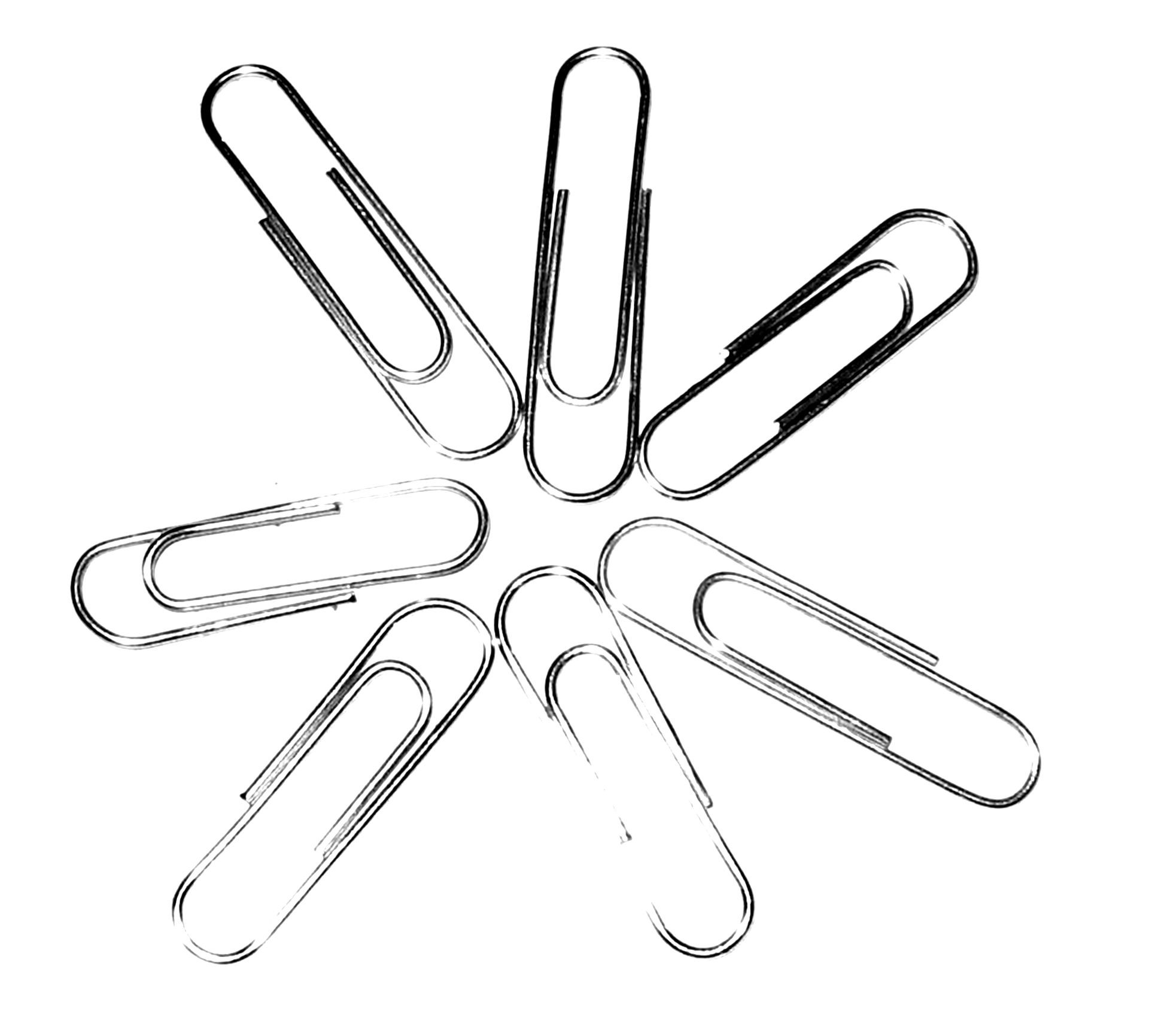
b. 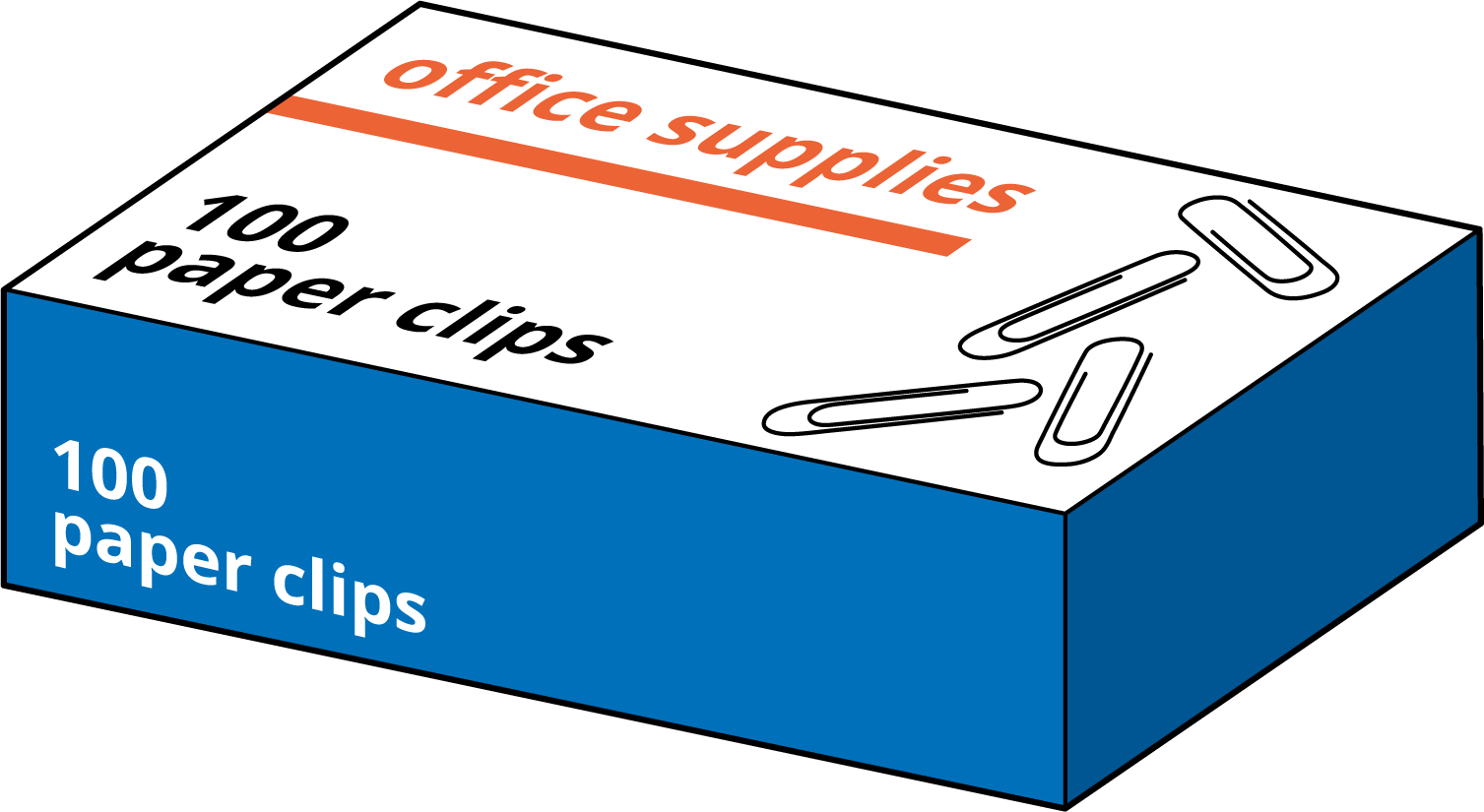
c. 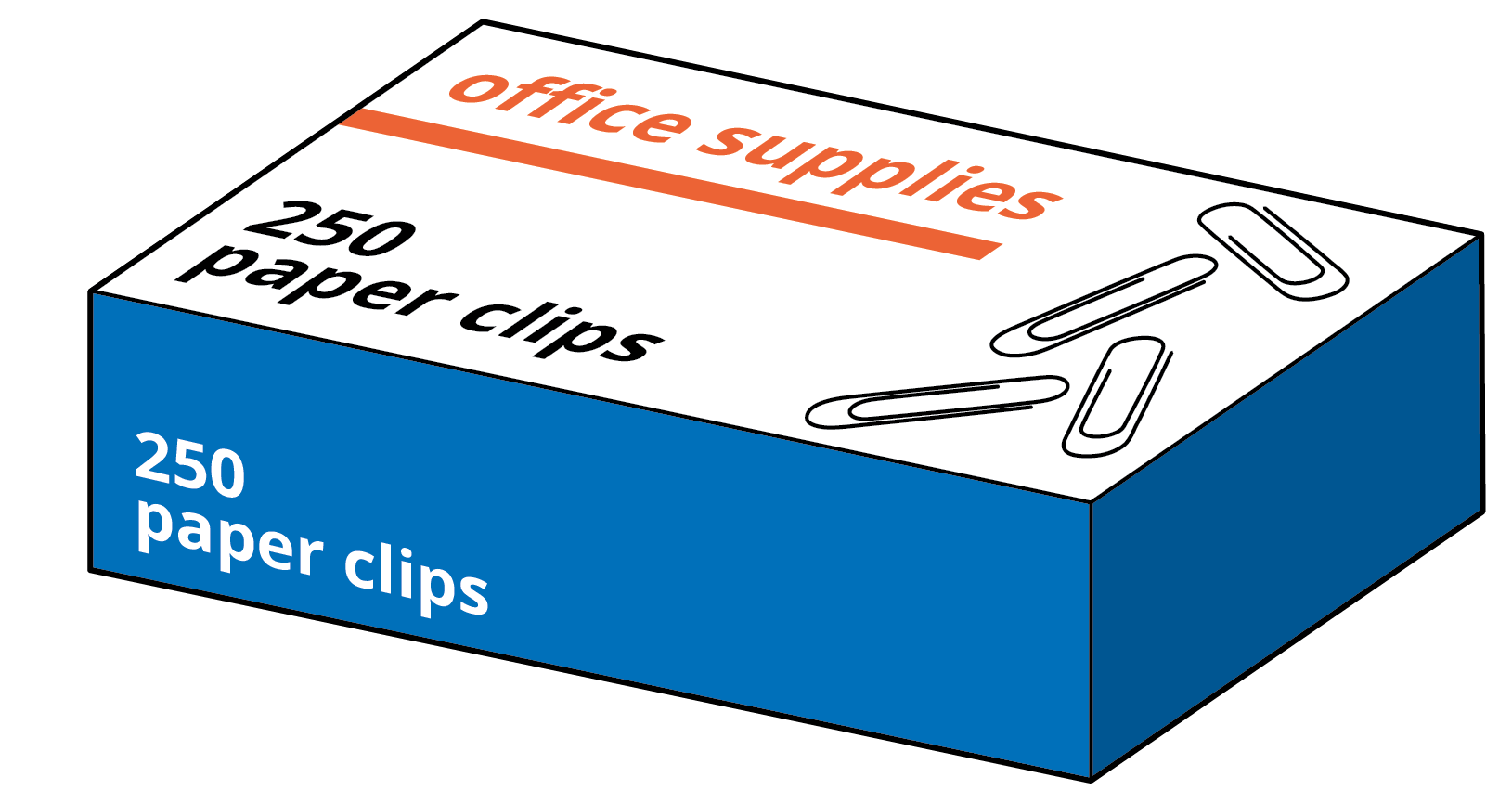
-
The paper clips in this image weigh 1 kilogram.

What is the relationship between kilograms and grams?
- Complete the table with the missing amounts in grams.
kilograms (kg) grams (g) 2 7 15 \(\frac{1}{2}\) \(9\frac{1}{2}\) -
Which weighs more? Be prepared to explain how you know.
- 8 kilograms or 8 boxes with 100 paper clips in each box
- 1,250 paper clips or 1 kilogram
- 500 grams or 2 boxes of 250 paper clips in each box
- \(\frac{1}{2}\) kilogram or 500 paper clips
Student Response
For access, consult one of our IM Certified Partners.
Activity Synthesis
- “Which unit is heavier a kilogram or a gram?” (kilogram)
- “Do you think your book bag is lighter or heavier than 1 kilogram?” (Heavier because I have a lot of books in it. Lighter because it’s empty.)
- Display the table and invite students to share their responses and reasoning.
- Discuss students’ responses to the comparison problems.
Activity 2: Liters and Milliliters (20 minutes)
Narrative
Previously, students learned about kilograms, grams, and the relationship between the two units. In this activity, they develop their sense of 1 milliliter, 1 liter, and the relationship between them. They do so by observing the number of times a smaller container with 1, 20, or 100 milliliters of liquid needs to be filled to make a larger amount, up to 1 liter. Students see that 1 liter is 1,000 times as much as 1 milliliter and convert quantities from liters to milliliters. When they visualize the relationship between liters and milliliters and use their understanding of this relationship to make conversions, students reason abstractly and quantitatively (MP2).
Videos that show liquid being poured are provided, but a live demonstration—if possible—is preferred.
Required Materials
Materials to Gather
Required Preparation
- If possible, gather a 1-milliliter medicine dropper, a 20-milliliter medicine dosage cup, a 100-milliliter measuring cup or cylinder, and an empty 1-liter bottle with a line at the 1-liter mark.
- Obtain 1.5 liters of water or access to a water source.
Launch
- Groups of 2
- If available, display a 1-milliliter medicine dropper, a 20-milliliter dosage cup, a 100-milliliter cup, and a 1-liter bottle. Refer to them when asking the following questions. Or refer to the image in the student book.
- “How many times do we need to fill the 1-milliliter medicine dropper to fill a 20-milliliter cup?” (20 times) “A 100-milliliter cylinder?” (100 times)
- “How many times do we need to fill the 20-milliliter cup to get 100 milliliters? Assume that each time the liquid is filled to the 20-milliliter line.” (5 times, because \(5\times 20 = 100\), or show the video at: vimeo.com/450153736.)
- “Now estimate how many times we’d need to fill the 100-milliliter cylinder to get 1 liter. Assume that each time the liquid is filled to the 100-milliliter line. Write down your estimate.”
- 30 seconds: quiet think time
- “Share your estimate with a partner.”
- If materials are available, allow students to check their estimates.
- Add 100 milliliters of water into the 1-liter bottle repeatedly until the water reaches the 1-liter mark. Ask students to keep count. Alternatively, show the video at: vimeo.com/450147862.
Activity
- “Complete the activity based on what you just learned about 1 liter.”
- “Work independently for a few minutes. Then, discuss your thinking with your partner.”
- 7–8 minutes: independent work time
- 2–3 minutes: partner discussion
- Monitor for the ways students reason about the number of groups of 1 milliliter, 250 milliliters, and 20 milliliters in 1 liter.
Student Facing
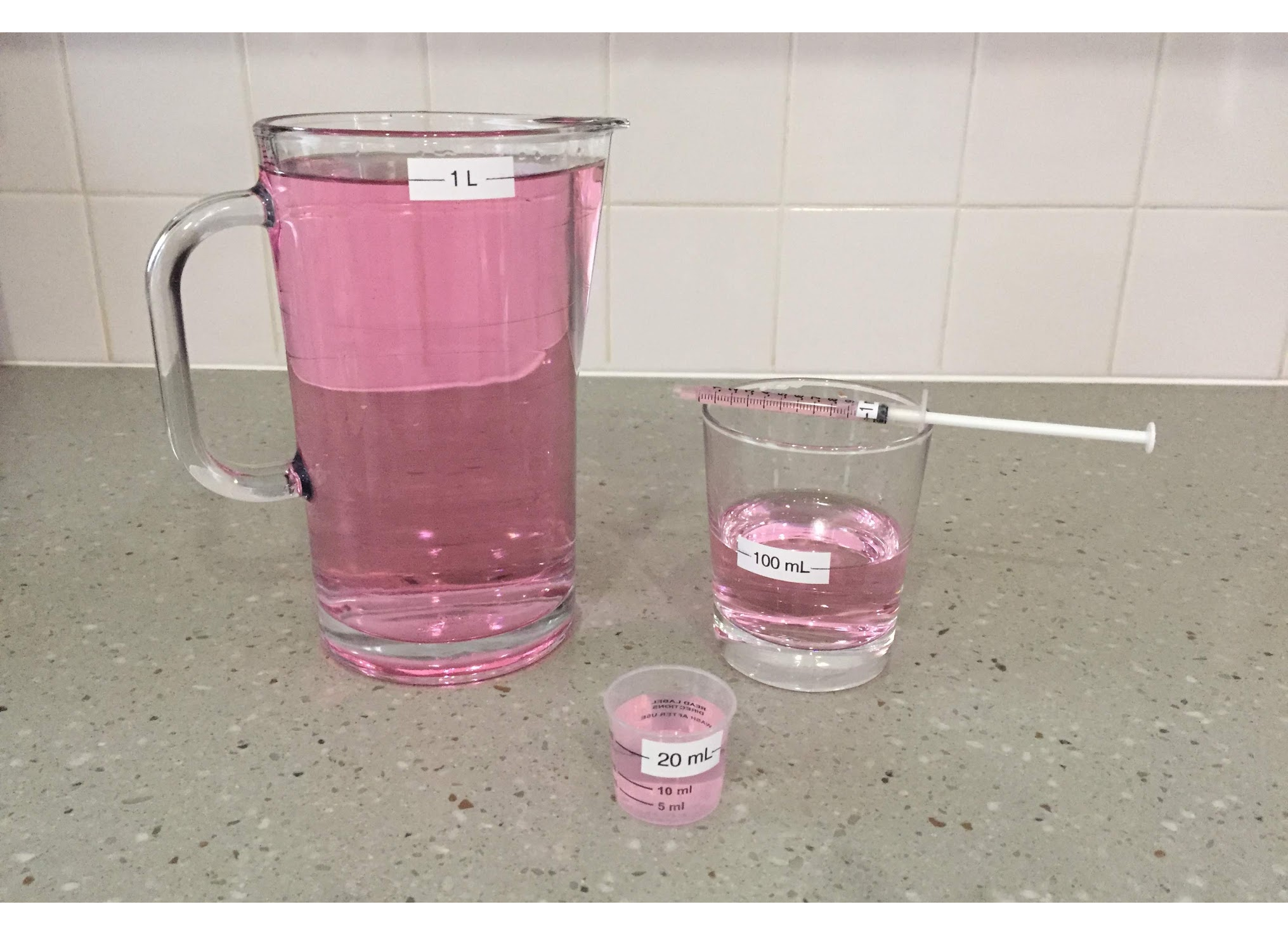
-
- Estimate: How many times do we fill the 100-milliliter glass to get 1 liter of liquid? (Assume that each time the liquid is filled to the 100-milliliter line.)
- Write a sentence to describe the relationship between milliliters and liters.
-
How many times do we need to fill each of these containers to get 1 liter?
- A 1-milliliter medicine dropper
- A 250-milliliter measuring cup
- A 20-milliliter cup
- Complete the table with the missing amounts in liters or milliliters.
liters (L) milliliters (mL) 1 4 7 16 \(\phantom{0000000000}\) 500 20,000
Student Response
For access, consult one of our IM Certified Partners.
Activity Synthesis
- Select students to share their responses to the second and third sets of problems of the last activity.
- If no students use equations to show their reasoning for the second set of problems, consider writing them: \(1,\!000 \times 1 = 1,\!000\), \(4 \times 250 = 1,\!000\), and \(50 \times 20 = 1,\!000\).
- Display and complete the table as students discuss their responses and reasoning for the last problem.
Lesson Synthesis
Lesson Synthesis
“Today we learned about a pair of units for measuring weight—kilograms and grams—and another for measuring the amount of liquids—liters and milliliters.”
“How are the two pairs of units alike?” (In each pair, there is a larger unit and a smaller unit. One unit is 1,000 times the other.)
“Which weighs more: 5 kilograms or 500 grams?” (5 kilograms, because it is equivalent to 5,000 grams)
“Which holds more: a 2-liter bottle, or a 20,000-milliliter bottle?” (A 20,000-milliliter bottle, because 2 liters is equivalent to 2,000 milliliters)
Cool-down: A Chef and a Host (5 minutes)
Cool-Down
For access, consult one of our IM Certified Partners.